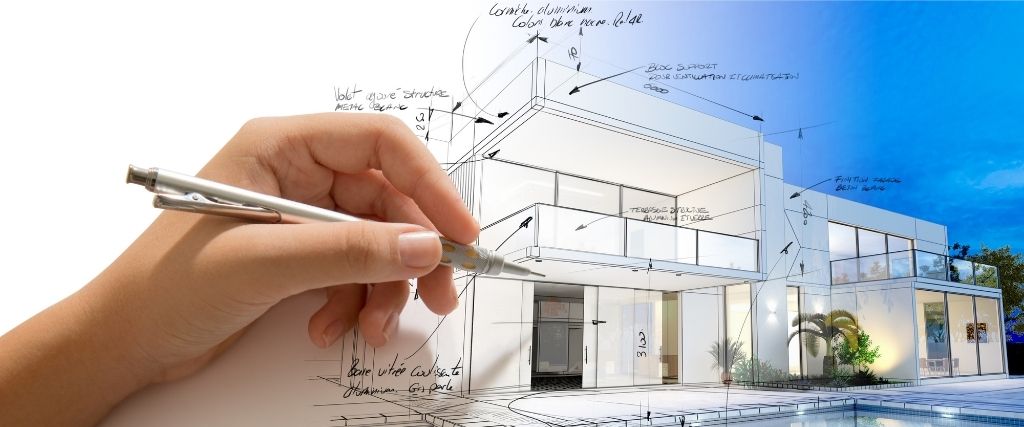When Victor Gruen designed the first indoor mall in the 1950s, he envisioned a community meeting space more like the bustling streets of his youth in Vienna. He imagined a mixed-use space. Restaurants, offices, and residential apartments would sit alongside retail stores. For Gruen, these malls would become a dedicated third space. Not home. Not work. Rather, a place where communities could gather and connect. The future of shopping centers today hearkens back to the roots that Gruen first envisioned. Instead of focusing only on shopping, these new “lifestyle centers” or “consumer engagement spaces” (CESs) are mixed-use, fulfilling the multiple and holistic needs of a community.
What is the future of shopping centers?
Shopping malls and retail centers are undergoing a revolution. The shopping landscape has changed in recent years, with consumers more reliant on online shopping. Larger anchor or department stores that used to keep the lights on are increasingly pulling out of malls. According to CNBC, “In 2018, there were 5,864 [store] closures announced and 3,239 openings.”It’s not all bad news, though. Forbes notes: “Shoppers spend nearly three times more in a mall with strong non-retail offers versus those not making these offers.”
These non-retail offerings are the driving force behind these new consumer engagement spaces. In large, often outdoor settings, consumers don’t only shop. They also meet friends for lunch in one of the center’s many restaurants. Consumers may live within the center, in high-rise apartments that grant them easy access to dining and shopping. Boutique gyms or workout centers invite morning weekend warriors, while nighttime events bring out families or couples for date nights.
In essence, consumer engagement spaces give communities their third space. They become a Main Street where people are invited to connect.
At MLM Incorporated, we help commercial businesses in Louisiana transform ordinary spaces into innovative retail opportunities that embrace this new era of shopping. These are the trends that typify these consumer engagement spaces.
Design on a human scale
The first malls were designed around the car, with huge sweeping parking lots. Today’s spaces are designed for people first. The best designers create places where people simply want to be.
Today’s mixed-use retail areas are highly walkable. Seniors and kids alike can navigate the sidewalks. Tree-lined walkways invite strolling and offer shade. Abundant green spaces give families a place to linger. Large architectural details, like wide dramatic staircases, are multi-functional and allow space for seating during events.
Instead of the gray uniform exterior of traditional malls, today’s spaces are filled with windows and glass installations. Shoppers can easily window shop and peek into the various stores before deciding to go in. Glass installations, like those that cover food areas or elevators, open up lines of sight across the area.
For example, an outdated space in Atlanta was recently reimagined as Peachtree Center, a modern outdoor plaza. A show-stopping glass-enclosed staircase connects to restaurants and shops. Above, gorgeous lighting illuminates gathering areas, public art, and fountains. Far above, modern office spaces look out onto the city skyline.
Made for experiences
A.T. Kearney’s report imagines the shopping centers of 2030 and beyond. Among their different projections, one idea is paramount: less stuff, more experiences.
As they note, the consumer engagement spaces of the future will focus “less on selling things than on creating a platform that facilitates sales by recognizing and understanding individuals and affirming and connecting them with affinity cohorts sharing their core values and aspirations.”
The digital generations, Millennials, and Gen Z, both crave experiences over products. These new retail spaces can help create those experiences with:
- Intentionally-designed gathering and sitting areas
- Live events, such as music performances, dog play days, markets, and kid’s shows
- Holiday and seasonally-themed experiences
- Pop-up shops with exclusive opportunities to shop at smaller brands
One of the newest arrivals in the Arlington, VA area is Ballston Quarter. A renovation transformed a once-failing indoor mall into an exciting mixed-use outdoor retail space. Their open courtyard now hosts a variety of community events, like free showings of classic movies, dog “Yappy Hours” with accompanying adoption events, and creative workshops hosted by their retailers.
A destination that goes beyond shopping
The future of shopping centers hinges on providing something consumers can’t find on a website. Instead, the leading consumer engagement spaces create destinations for their target customers.
Plaza Fiesta in Atlanta was another outdated indoor mall. Rather than change the space, they changed the use of it by connecting it to the values and needs of a specific community. Today, they’re one of the largest gathering places for the area’s Latino community. Large events and concerts take place here. Foodies hit the large farmer’s market area or devour churros or empanadas in on-site restaurants.
Bal Harbour Shops near Miami is another example of a destination shopping experience. Tropical plants line outdoor walkways that lead into some of the highest-end retailers in the world. Their focus is on providing luxury shopping, dining, and hotel experiences that you can’t find elsewhere.
Both of these examples show how a defined focus can take a retail concept from expected to extraordinary.
Dialed into technology
Finally, it goes without saying that the future of shopping centers is the future of commerce as a whole. Technology continues to change the landscape of shopping, both at home and in retail stores.
The best retail centers embrace technology. They’re connected to their customers on social media, with branded hashtags and live video events. Beyond that, they create Insta-worthy photo opportunities. Think large colorful backdrops for the season, fun interactive displays in stores, and unique foodie experiences.
Maps are interactive, but there’s also an app for shopping and a mobile-friendly website. Customers can tap into WiFi while shopping, and charge their phones at ready-made charging stations. Finally, shoppers can easily buy online and pick it up in person (or try it on in person and order it shipped to their home).
Beyond that, though, these shopping centers make technology seamless for their retailers. Mobile POS systems allow pop-up stores with limited capital to make a splash in their gathering spaces. Large tech brands can provide demonstrations anywhere with dependable WiFi.
As the A.T. Kearney report points out, this change from anchor stores to unique, exclusive, pop-ups offers “CES operators an easy way to change their vendor population, providing consumers with unexpected ‘treasure hunting’ experiences.”
What we do at MLM Incorporated
As 99% Invisible reports about the designer of the indoor mall: “Gruen argued that good design equaled good profits. The more beautiful the displays and surroundings, the longer consumers are will want to stay in a shop. The more time a shopper spends in a store, the more they will spend.”
The future of shopping centers inevitably goes back to this. The retail spaces of tomorrow will be different from traditional indoor malls, but they’ll still tap into a shopper’s needs and wants. They’ll simply be places people want to be. Rather than large air-conditioned buildings that are easy to get to by car, Millennials and Gen Z shoppers want an experience. They want an escape from home and work. And, they need a place to gather with their community. Provide them with that and they’ll spend more time in the retail centers (and thus, spend more in the stores).
At MLM Incorporated, we help developers and businesses in the South transform ordinary spaces into unique commercial destinations. Our team manages all aspects of construction, from initial design with our architects to overseeing the technicians and contractors who create the space your community needs.
Start planning your commercial project today by setting up a consultation with our team.

